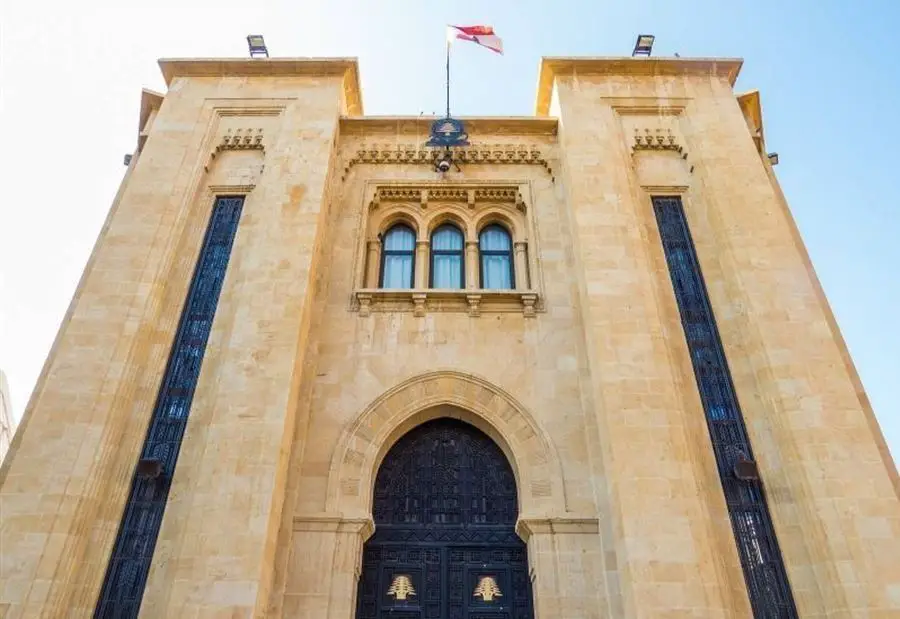“بعد كورونا… تحذيرات من تسرب سلالات فيروسية قاتلة!”
حذّرت اللجنة الدولية للصليب الأحمر، في بيان رسمي صدر يوم الثلاثاء، من خطر انتشار فيروسات مميتة، من بينها فيروس إيبولا، من مختبر في مدينة غوما الواقعة في شرق جمهورية الكونغو الديمقراطية، وذلك بسبب القتال العنيف الذي تشهده المدينة.
في مؤتمر صحافي عُقد في جنيف، عبّر باتريك يوسف، المدير الإقليمي للجنة الدولية للصليب الأحمر، عن “قلق بالغ” بشأن الوضع في مختبر المعهد الوطني للبحوث الطبية الحيوية في غوما، حيث أشار إلى ضرورة “الحفاظ على العينات التي قد تتعرض للتلف جراء الاشتباكات”، محذراً من العواقب الخطيرة التي قد تنتج عن تسرب السلالات البكتريولوجية، بما في ذلك فيروس إيبولا.
وفيما يخص تفشي فيروس إيبولا في جمهورية الكونغو الديمقراطية، أفادت منظمة الصحة العالمية بأن المنظمة تجري مناقشات مستمرة مع وزارة الصحة في الكونغو حول نتائج التسلسل الجيني للحالات المؤكدة. وكشفت نتائج هذه الفحوصات أن أول حالة إيبولا في هذا التفشي هي من سلالة “متغير إيتوري”، مما يربط هذا التفشي بتفشي سابق للفيروس في جمهورية الكونغو الديمقراطية بين عامي 2018 و2020 في مقاطعتي كيفو الشمالية وإيتوري.
وبالنسبة لتفشي فيروس إيبولا في غينيا، أوضحت منظمة الصحة العالمية أن السبب الدقيق لعودة ظهور الفيروس في غينيا لا يزال غير معروف. وبسبب سوء الأحوال الجوية، لم تتمكن المنظمة من إرسال العينات المؤكدة إلى مختبر باستور في داكار (السنغال) لإجراء التسلسل الجيني الكامل. مع ذلك، أكدت المنظمة أن السلالة التي تم اكتشافها هي سلالة “زائير” من فيروس إيبولا.
وأشارت المنظمة إلى أن عودة ظهور فيروس إيبولا في المنطقة أمر متوقع، نظراً لأن المرض متوطن في جمهورية الكونغو الديمقراطية، حيث يتواجد الفيروس في مستودعات حيوانية قد تكون مصدرًا لإعادة انتشار المرض. كما يمكن أن تساهم السوائل الجسدية للناجين من إيبولا في نقل الفيروس إلى آخرين. وتعتبر منظمة الصحة العالمية أن حدوث حالات متفرقة بعد تفشي المرض أمر طبيعي.
وأكدت المنظمة أن الفيروس يعتمد على “المضيف المكمن” مثل الغوريلا والثدييات الأخرى التي تحمل الفيروس وتقوم بنقله للبشر. كما أوضحت بعض الدراسات أن خفافيش الفاكهة الإفريقية قد تكون مسؤولة عن انتقال فيروس إيبولا.
وأوضحت منظمة الصحة العالمية أن البلدان المتأثرة بهذا الفيروس هي موطن للحيوانات الحاملة للفيروس. كما أشارت إلى أن تزايد النمو السكاني وتعدي البشر على الغابات وزيادة التفاعل المباشر مع الحيوانات البرية يزيد من احتمالية انتقال الفيروس.
وفيما يتعلق بالإجراءات الوقائية، أكدت المنظمة أنه تم تأكيد وجود حالات إصابة بفيروس إيبولا في كل من جمهورية الكونغو الديمقراطية وغينيا، حيث يتم علاج المرضى في مراكز متخصصة. كما أن البلدان المجاورة مثل ليبيريا وسيراليون وجمهورية الكونغو الديمقراطية (أوغندا، رواندا، بوروندي، جنوب السودان) في حالة تأهب لمواجهة أي حالات إصابة محتملة. وأوضحت أن أي حالة مشتبه بها يتم عزلها فورًا ويتم إجراء الفحوصات اللازمة.
فيروس إيبولا ينتقل إلى البشر من الحيوانات البرية مثل الخفافيش والفواكه والخنازير، ومن ثم ينتشر بين الناس من خلال الاتصال المباشر مع الدم أو إفرازات أو أعضاء أو سوائل جسدية أخرى للمصابين. كما يمكن أن ينتشر الفيروس عبر الأسطح الملوثة.
يذكر أن فيروس إيبولا تم اكتشافه لأول مرة في عام 1976 في حالتين متزامنتين في جمهورية الكونغو الديمقراطية والسودان. ورغم ذلك، يبقى المصدر الدقيق للفيروس غير معروف، حيث لا تزال الأبحاث جارية حوله.
فيروس إيبولا متوطن في جمهورية الكونغو الديمقراطية، وقد شهدت العديد من الدول الأخرى تفشيًا للفيروس مثل السودان وغابون وأوغندا.
On Tuesday, the International Committee of the Red Cross issued a warning about the risk of deadly viruses, including the Ebola virus, leaking from a laboratory in Goma, located in eastern Democratic Republic of the Congo, due to the ongoing violent clashes in the city.
In a press conference held in Geneva, Patrick Youssef, the regional director of the International Committee of the Red Cross, expressed “grave concern” regarding the situation at the National Institute for Biomedical Research laboratory in Goma. He emphasized the need to “preserve the samples that could be damaged due to the ongoing clashes,” warning of the catastrophic consequences if the bacteriological strains, including the Ebola virus, were to leak.
Regarding the Ebola outbreak in the Democratic Republic of the Congo, the World Health Organization (WHO) confirmed that it is in continuous discussions with the Congolese Ministry of Health about the genomic sequencing results of confirmed cases. The sequencing revealed that the first Ebola case discovered in this outbreak is from the “Ituri variant” strain, indicating that the current outbreak is connected to a previous outbreak in the Democratic Republic of the Congo between 2018 and 2020, in the North Kivu and Ituri provinces.
Concerning the outbreak in Guinea, the WHO clarified that the exact cause of the virus's resurgence in Guinea is still unclear. Due to bad weather conditions, samples from confirmed cases have not yet been sent to the Pasteur Institute in Dakar (Senegal) for full genome sequencing to determine if the outbreak is linked to any other previous outbreaks. However, the WHO confirmed that the strain discovered is the “Zaire” strain of Ebola.
The WHO noted that the re-emergence of Ebola is expected, as the virus is endemic in the Democratic Republic of the Congo, with the virus residing in animal reservoirs in the region. Exposure to infected animals can lead to the virus re-emerging. The WHO also mentioned that bodily fluids from Ebola survivors could contribute to the transmission. It is common for sporadic cases to occur after a major outbreak.
The organization clarified that the virus depends on the presence of a “host reservoir,” such as gorillas or other mammals that carry and spread the virus to humans. Studies have suggested that African fruit bats might be responsible for the transmission of Ebola.
The WHO added that the affected countries are home to potential host animals for the virus. Other contributing factors to the spread of Ebola include population growth, encroachment on forest areas, and increased interaction with wild animals that could carry the virus.
As for preventive measures, the WHO confirmed that there are confirmed cases of Ebola in both the Democratic Republic of the Congo and Guinea, where patients are being treated in specialized centers. Neighboring countries like Liberia, Sierra Leone, Uganda, Rwanda, Burundi, and South Sudan are on high alert for any potential Ebola cases. Suspected cases are isolated, and necessary tests are conducted.
Ebola is transmitted to humans from wild animals, such as bats, fruit bats, and pigs, and spreads among humans through direct contact with the blood, bodily fluids, organs, or other bodily fluids of infected individuals. It can also spread through contaminated surfaces.
It is worth noting that the Ebola virus was first discovered in 1976 in two simultaneous outbreaks: one in Yambuku, Democratic Republic of the Congo, and the other in a remote area of Sudan. However, the exact source of the virus remains unknown, and research continues.
Ebola is endemic in the Democratic Republic of the Congo, and several other countries, such as Sudan, Gabon, and Uganda, have experienced outbreaks.
Translated by international scopes team
المصدر: العربية
 International Scopes – سكوبات عالمية إجعل موقعنا خيارك ومصدرك الأنسب للأخبار المحلية والعربية والعالمية على أنواعها بالإضافة الى نشر مجموعة لا بأس بها من الوظائف الشاغرة في لبنان والشرق الأوسط والعالم
International Scopes – سكوبات عالمية إجعل موقعنا خيارك ومصدرك الأنسب للأخبار المحلية والعربية والعالمية على أنواعها بالإضافة الى نشر مجموعة لا بأس بها من الوظائف الشاغرة في لبنان والشرق الأوسط والعالم




